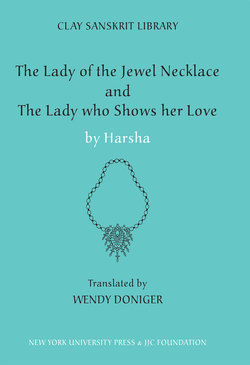Читать книгу The Lady of the Jewel Necklace & The Lady who Shows her Love - Harsha - Страница 37
На сайте Литреса книга снята с продажи.
Оглавлениеaspects of one person brings with it the same satisfaction as the moment when the last piece of the jigsaw puzzle—or the last line connecting the dots—slips in to reveal the total image, or when, in a piece of classical music, the expected final sequence of chords comes into resolution. This accounts for the extraordinary popularity of recognition scenes in all types of literature, a popularity that remains in tension with the contempt of the critics.
Self-impersonation1
Several characters in the two plays by Harsha accidentally (or, occasionally, purposefully) imitate themselves, and in both plays, the double disguise frees another self. In ‘The Lady who Shows her Love,’ Udayana-as-Mano·rama-as-Udayana is able to make love to his new woman—Priya·darshika-as-Aranyika-as-Vasava·datta—under the eyes of his queen and get away with it, as he fails to do in his own persona, the king-as-the-king. And in ‘The Lady of the Jewel Necklace,’ it is only when the queen inadvertently masquerades as her rival, the queen-as-Ratnavali-as-Sagarika-as-the-queen, that the truth comes out, first in the king’s words and then in Vasava·datta’s honest expression of her hurt and her anger.
Udayana’s impersonation of Udayana in ‘The Lady who Shows her Love’ is the most explicit instance of self-impersonation, but in ‘The Lady of the Jewel Necklace,’ the queen says of him, when he behaves in a characteristically adulterous manner, “My husband, this is worthy of you; it’s just like you.” The word she uses, sadrsam, more specifically refers to something that looks just like some- ________
